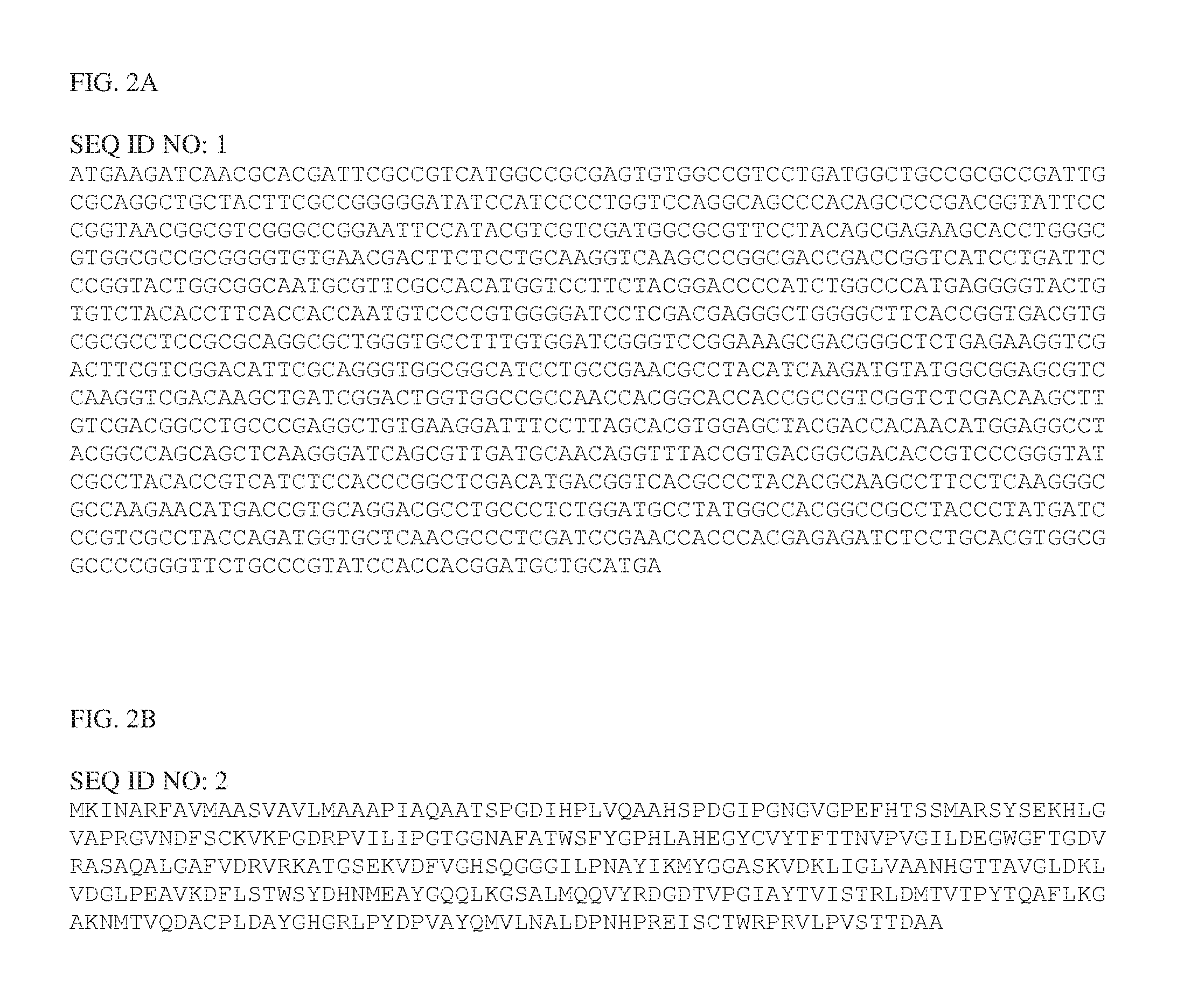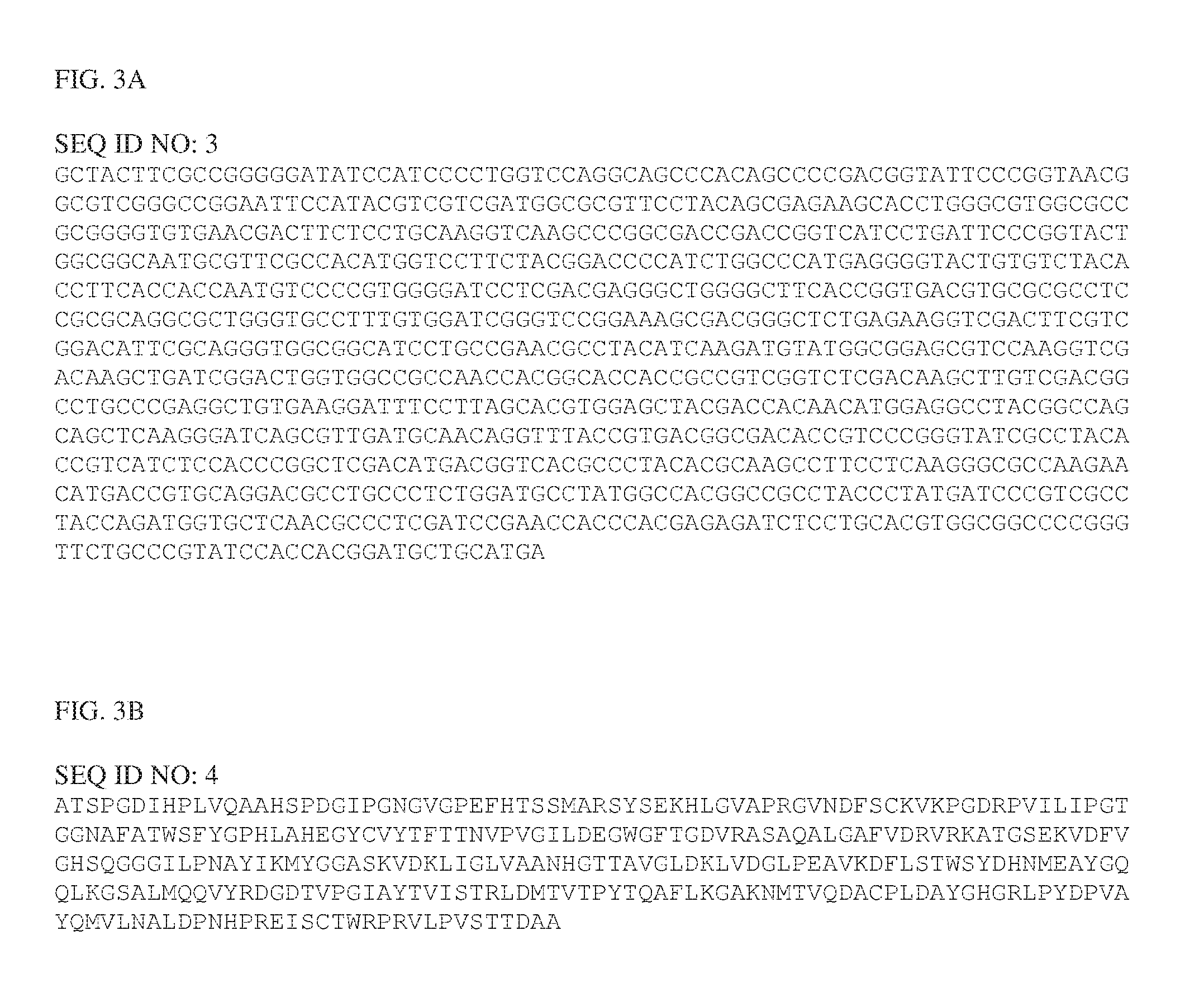Reduced saturated fatty acid profiles of ruminants
a ruminant fatty acid and ruminant technology, applied in the field of improving the ruminant fatty acid profile, can solve the problems of nobody has examined the in-vivo effect of oral administration of anti-lipase antibodies to ruminants, so as to reduce biohydrogenation and/or lipolysis
- Summary
- Abstract
- Description
- Claims
- Application Information
AI Technical Summary
Benefits of technology
Problems solved by technology
Method used
Image
Examples
example 1
Antibody Development
[0050]Anaerovibrio lipolyticus, Butyrivibrio fibrisolvens strain H17C, Propionibacterium avidum, and Propionibacterium acnes are prominent ruminal bacteria that have been identified as contributors to lipolysis in the rumen. To test this technology in vitro, chicken IgY antibodies are generated against these bacteria, isolated from the egg yolks and are tested as inhibitors of bacterial lipolytic activity. Additionally, an antibody generated from chicken egg yolks against a Pseudomonas lipase is tested to determine if an antibody raised against the purified protein would be more effective than antibodies raised against whole cell preparations.
[0051]To develop the IgY antibodies, separate 20 ml early stationary phase cultures of each of the lipase-producing bacteria containing approximate 10e8 to 10e9 colony forming units are separately centrifuged for 5 minutes at 4000×g. The resultant supernatant fluid from each bacterium is poured off, and each pellet is resusp...
example 2
In-Vitro Assay of Chicken IgY
[0053]To test the effectiveness of the antibodies generated in Example 1 above, each bacterium is cultured under anaerobic conditions in a standard broth medium which contained (per I.): 292 mg K2HPO4, 292 mg KHPO4, 480 mg (NH4)2SO4, 480 mg NaCl, 100 mg MgSO4.7H2O, 64 mg CaCl2.2H2O, 4,000 mg Na2CO3, 600 mg cysteine HCl, 10 g trypticase (BBL Microbiology Systems, Cockeysville, Md.), 2.5 g yeast extract, branched-chain fatty acids (1 mmol each of isobutyrate, isovalerate, and 2-methylbutyrate), hemin, vitamin mix (20 mg each thiamine, pantothenate, nicotinamide, pryridoxine HCl, riboflavin, 1 mg p-aminobenzoic acid, 0.5 mg biotin, 0.5 mg folic acid, 0.2 mg vitamin B-12, and 0.5 mg lipoic acid) trace minerals (Cotta and Russel, J. Dairy Sci. 65:226-234 (1982)) and 0.02% (wt / vol) glucose. The medium is further prepared by boiling to remove dissolved O2 and then saturated with O2-free gas while cooled on ice under a continuous flow of 100% CO2The cooled mediu...
example 3
Production of Recombinant P. Acnes Lipase and IgY Against the Recombinant P. Acnes Lipase
[0057]In an attempt to generate antibodies with stronger inhibitor activity against lipase, recombinant lipase is prepared. Propionibacterium acnes lipase is encoded in gheA. It is 339 amino acids long as a pro-protein (containing a secretion signal peptide) and 313 amino acids long as a mature protein. See FIG. 2A and FIG. 2.B for the DNA sequence (SEQ ID NO: 1) and amino acid sequence (SEQ ID NO: 2), respectively, for pro-lipase (gheA). See FIG. 3A and FIG. 3B for the DNA sequence (SEQ ID NO: 3) and amino acid sequence (SEQ ID NO: 4), respectively, for mature lipase. First, a portion of P. acnes gheA encoding amino acids 27-339 (the mature protein without the secretion signal peptide) is cloned by PCR using the following primers: gheA-F2: CGCGAACAGATTGGAGGTGCTACTTCGCCGGGGGATATC (forward primer, SEQ ID NO: 5); and gheA-R: GTGGCGGCCGCTCTATTATGCAGCATCCGIGGTGGATAC (reverse primer, SEQ ID NO: 6). A...
PUM
| Property | Measurement | Unit |
|---|---|---|
| Fraction | aaaaa | aaaaa |
| Fraction | aaaaa | aaaaa |
| Fraction | aaaaa | aaaaa |
Abstract
Description
Claims
Application Information
 Login to View More
Login to View More - R&D
- Intellectual Property
- Life Sciences
- Materials
- Tech Scout
- Unparalleled Data Quality
- Higher Quality Content
- 60% Fewer Hallucinations
Browse by: Latest US Patents, China's latest patents, Technical Efficacy Thesaurus, Application Domain, Technology Topic, Popular Technical Reports.
© 2025 PatSnap. All rights reserved.Legal|Privacy policy|Modern Slavery Act Transparency Statement|Sitemap|About US| Contact US: help@patsnap.com



